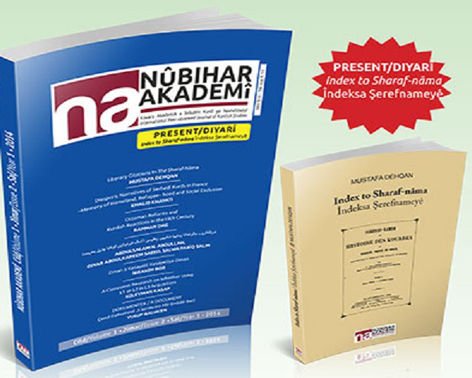
Nûbihar Akademi 2
The second issue of the magazine includes 6 seminal academic studies, four in English and two in Kurmanci, on basic cultural fields such as Kurdish language, culture, history and literature.
With his article "A Classroom Research on Whether Using L1 or L2 in L3 Acquisition" , Süleyman Kasap addresses the difficulties of learning a third language through a second language rather than through his native language, which is the first language. As an example, it reveals the problems experienced by students who learn English in Turkish instead of their native language, Kurdish, in the learning process and the results obtained through an applied research, revealing the importance of education and learning in the mother tongue in this field.
Mustafa Dehqan , with his article titled "Literary Citations in the Sharaf-nāma" , his study on the bibliographies cited in Şerefxan's famous work Şerefname is important in terms of shedding light on the cultural richness and scientific interest in the Kurdistan geography of the period, as well as in terms of bibliography and citation. It provides a remarkable research example in revealing the originality of Şerefname.
Khaled Khayati , in his study titled "Diasporic Narratives of Serhedî Kurds in France - Memory of Homeland, Refugee-hood and Social Exclusion", which also has the feature of field research, describes the lives of refugee Serhad Kurds in France, by turning into their subconscious, the victimization, trauma and pain they experienced in Kurdistan. It presents an original example of sociological research by examining how it affects the society and how it became an important example of diaspora victimization narratives.
Rahman Dağ 's work titled "Ottoman Reforms and Kurdish Reactions in the 19th Century" , which deals with the reactions of the Kurds against the Ottoman Reforms in the 19th Century, covers a period from the Abdurrahman Pasha rebellion (1808) to the Şeyh Ubeydullah River rebellion (1880). It evaluates the series of rebellions as rebellions against the partial autonomous structures of the Kurdish principalities that have existed since the 16th century, against the reforms of the Sublime Porte that strengthened the central authority, rather than as national rebellions, and in this respect, it makes an important contribution to the Kurdish political history.
İbrahim Bor , who deals with the effect of language on identity formation and the formation of linguistic identity, in his work titled "Ziman û Kesayetî: Kesayetiya Ziman" , deals with how the character of a people is reflected in the language and how language shapes a people's view of the world and their soul, Humboldt, Herder, Chomsky. It offers a theoretical framework on the subject based on the views of thinkers such as.
The article titled "Şîrovekirin û Saloxdana Zimaniya Şaşiyên Rênivîsê (Li Def Fêrxwazên Qonaxa Çarê Bineret)" by Ebdulselam Necmeddîn Ebdullah , Diyar Ebdulkerîm Se'îd and Selwa Ferîq Salih focuses on the grammatical and writing, speaking dictionary errors It draws attention to the importance of using language correctly in education by considering it from the perspective of listening and speaking.
In the last section of the magazine , Yusuf Baluken presents three important documents to the scientific world under the title "Dokumantek/A Document" " Çend Dokument Ji Serdema Mîr Evdalê Botî" . These documents; The construction inscription of the Evdaliye Madrasah, dating from the reign of Cizre Bey Mir Evdal, who ruled in Kurdistan in the 15th century, consists of the tombstones of Mem û Zîn, three coins minted by Mîr Evdal in Cizre and Siirt, and explanatory information about them.
| The heart | : | Kurdish |
| magazine | : | Nubihar Academy |

